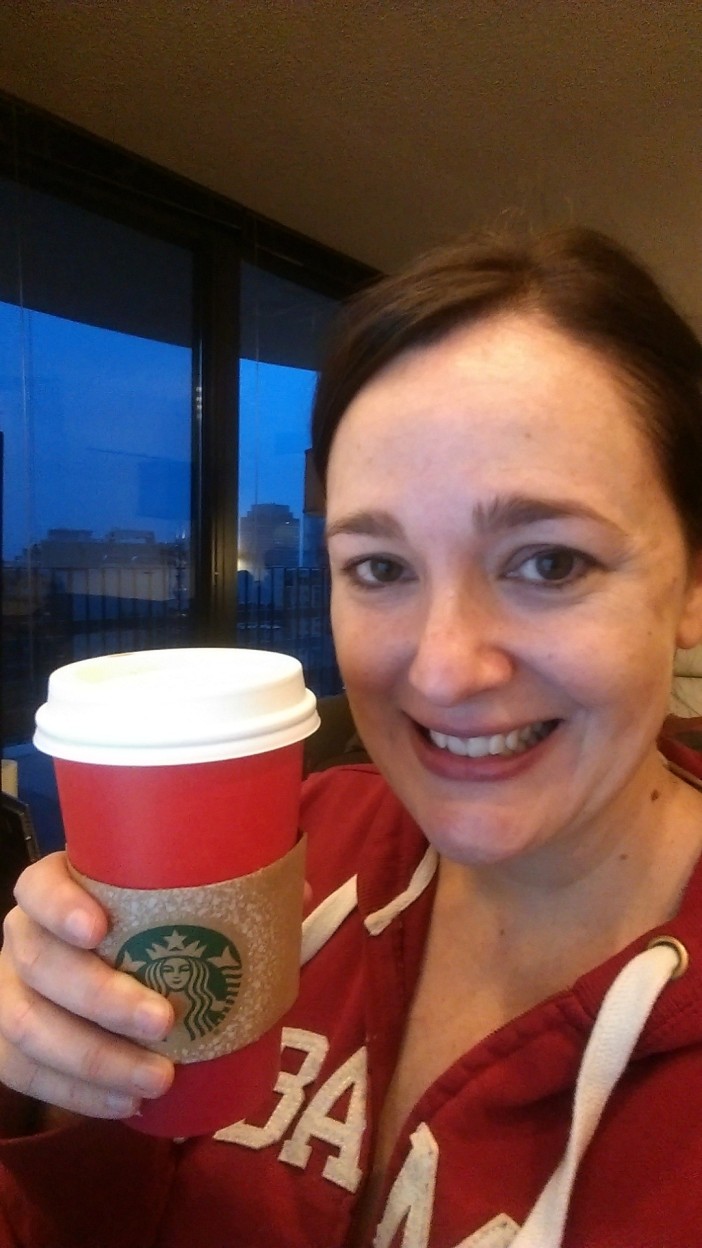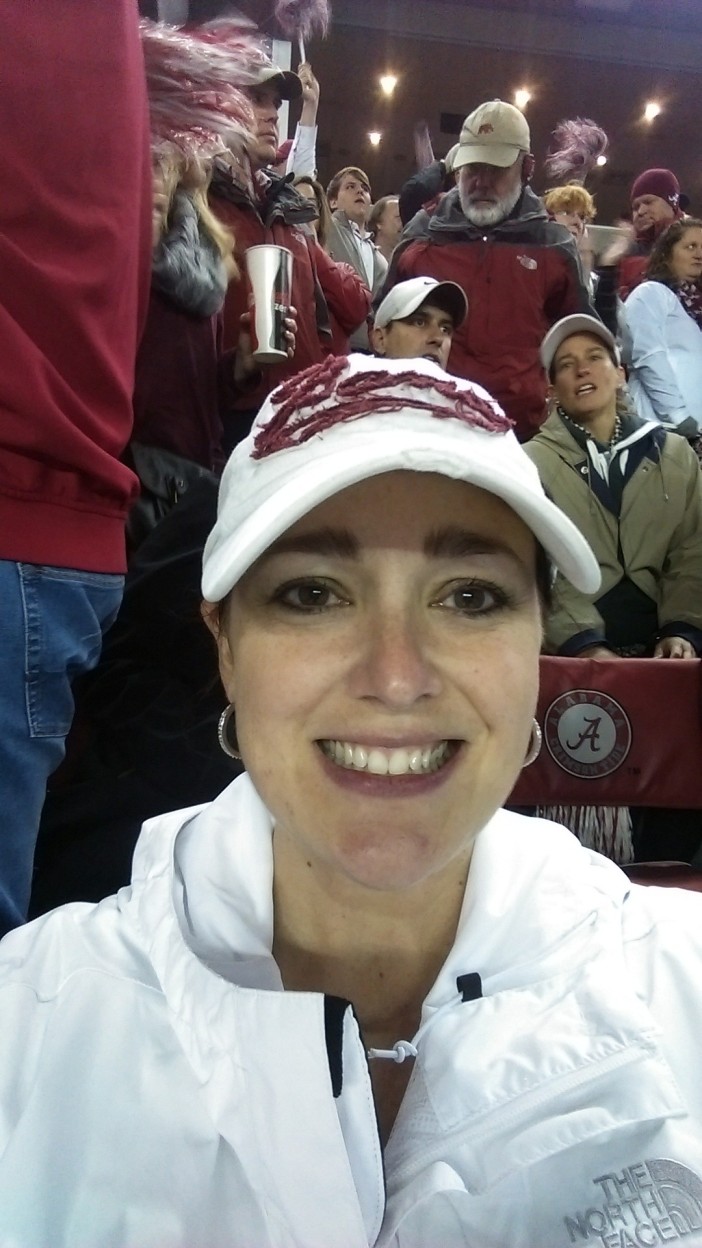
Well, I finally did it. I finally mailed my insurance claim to BCBS of Illinois. For those of you who don’t know, I literally live next door to the BCBS building. So, walking across the other side of the street to the post office to mail it (certified and return receipt…which set me back $13.19) seemed ludicrous, but I needed to have proof of mailing and proof of receipt. And, I stood in line for over 30 minutes. That warranted a trip to Starbucks. I tried for the first time coconut milk in my pumpkin spice latte (no whipped cream, of course). Not 100% paleo, but figured I needed a treat today. It was good. I didn’t taste the difference.
Ok, back to the point of this posting.
For surgeries that cost more than the average sales price of a vehicle, you might be wondering what took me so long? Number one, I’m a huge procrastinator. And this was no small task. In the end, my submission was 71 pages long, most of which were articles supporting the medical necessity for surgery. Plus, I had to gather invoices, medical records and the like to substantiate I had failed conservative treatment. And then the hard part, writing the dreaded cover letter. I’ve had it written for some time now (after accidentally deleting the first draft, drats!) and I was just waiting on one last piece of information to compile my packet. Another reason for the delay… the mental anguish, time and energy it takes in undertaking this huge project.
I’m not expecting insurance to pay for my surgeries. If they do, that is super duper bonus. I took out a loan from my 401k. It was a great interest rate and I’m paying it back over the next five years through payroll deduction. So my surgeries are paid for. I know how tremendously fortunate I am that was even an option. So many of the ladies afflicted with lipedema don’t have these resources. They are stuck and this is incredibly sad and disheartening.
The reason I’m not expecting insurance to pay for my surgery is that liposuction is not recognized in the U.S. as a treatment for lipedema. Heck, most U.S. doctors don’t even know that lipedema exists. An influential physician who graduated from a top medical school even joked he wanted his money back from medical school. Despite being in practice for over 20 years, this was the first time he had heard of lipedema. There haven’t been any U.S. studies (plenty in Germany and other European countries) that liposuction is an effective treatment. As such, insurance companies haven’t established a medical policy outlining the criteria for which surgery would be deemed medically necessary (that’s how it works in insurance-land.) My best shot – some of my fellow lipedema sisters have been successful, others have not – is to prove that this procedure is reconstructive (and therefore medically necessary) because I have documented evidence of physical functional impairment or that the surgery was primarily to correct documented progressive impairment of physical function that interferes with the performance of activities of daily living. [Note: check your specific insurance plan documents for the criteria for reconstructive surgery.]
Here’s what I wrote:
Please approve the following claims for dates of service 4/28/15, 4/30/15, and 5/5/15. These surgeries were medically necessary for the treatment of lipedema (not be confused with lymphedema.) Although you’ve likely never heard of lipedema, Drs Allen and Hines Jr from the Mayo clinic labeled this condition as lipedema in 1940. Outside the US, lipedema is known as “lipoedema”, meaning edema of the fat. This disorder is likely very common but underdiagnosed.
I have enclosed two letters of medical necessity: one from Dr. Karen Herbst, an Associate Professor of Medicine at the University of Arizona, the leading expert on adipose tissue orders, and another from my surgeon, Dr. Jason Emer.
Since puberty, I have had a significantly disproportionate body shape: a very small upper body and extremely large hips, buttocks and thighs. I weighed approximately 108 pounds at the age of 14, so by no means considered obese, despite my large lower half. Beginning in my early twenties, I experienced periods of unexplained weight gain, despite calorie restrictions and exercise. For example, I would maintain the same weight for several years and then in the matter of a couple of months gain 15 pounds. Over the years, pain and fatigue became part of everyday life. Despite diet and exercise, I was unable to lose weight.
In 2011, I was diagnosed with chondromalacia in my left knee. I underwent physical therapy but the pain in climbing and descending stairs persisted. I underwent the hCG diet and lost approximately 20 pounds, the first time I was ever successful in losing weight. I have maintained that weight loss. Despite the weight loss and more physical therapy, the pain in my knees persisted. Further, I had the propensity to get tendonitis in my feet so standing or walking for long periods of time were very painful. I was easy to fatigue. Light touches to my body hurt. Getting my blood pressure checked was torture on my arms.
I have been to countless doctors over the years trying to figure out why I have felt the way that I do. I’ve had more colonoscopies, MRIs and CTs than anyone my age deserves. I have cost BCBS of Illinois a lot of money in these doctors visits, tests, and medications.
In June of 2014, I discovered there was a name for what I had – lipedema. I immediately scheduled an appointment with Dr. Karen Herbst, although she was booked out six months. I began conservative treatments of an anti-inflammatory diet, compression, manual lymphatic drainage (MLD), supplements and whole body vibration. Despite the conservative treatments, the pain in my knees persisted.
In December 2014, I was finally diagnosed with lipedema. All of the symptoms I had been experiencing all of these years were masquerading the real problem – lipedema.
Diagnosed with stage 2 lipedema already with mobility issues, Dr. Herbst recommended liposuction to treat the lipedema.
There are few surgeons in the U.S. who are experienced with lipedema, despite European surgeons, namely German surgeons, who have been treating lipedema for over twenty years. As such, I had to travel to Beverly Hills, California for surgery to obtain a safe procedure by someone experienced in lipedema.
My life has changed dramatically since surgery. The pain immediately reduced by approximately 90%. My activities of daily living have improved tremendously. Although I had been working out with a personal trainer for a year and half prior to surgery, I was not making any progress. After surgery, I can lift more weight, walk faster, and am beginning to be able to manage motions that require me to bend my knees (i.e. squats and leg presses). Stairs are significantly easier to climb and descend and most days I do not require holding onto the railing for support. I do not fatigue nearly as easily – my energy levels are high and I am sleeping better. I am not nearly as sensitive to touch as I was pre-surgery. My boyfriend can wrap his arms around me now without me cringing in pain. I can blow dry my hair without my arms hurting. I can do floor exercises without pain from simply lying on a hard surface.
Liposuction for lipedema is medically necessary and is not experimental or investigational. I have attached the following articles:
- Frambach, Y et al. Long-term results of liposuction in patients with lipedema. Presented at: 23rd World Congress of Dermatology; June 8-13, 2015; Vancouver, British Columbia. http://www.healio.com/aesthetics/liposuction-body-contouring/news/online/%7B094827e5-1ba1-4dbb-9b85-d7f00798b107%7D/liposuction-significantly-increases-quality-of-life-in-lipedema-patients
- 2. Stutz, JJ. (2011) ‘Liposuction of Lipedema to Prevent Later Joint Complications,’ Translated from vasomed . Volume 23 January 2011.
- Rapprich, Stefan, Dingler, Anne, Podda, Maurizio. (2011) ‘Liposuction is an effective treatment for lipedema – results of a study with 25 patients’, Journal of the German Society of Dermatology. 9:33–40
- Stutz, JJ, Krahl, D. (2008) ‘Water Jet-Assisted Liposuction for Patients with Lipoedema: Histologic and Immunohistologic Analysis of the Aspirates of 30 Lipoedema Patients,’ Aesth Plast Surg.
- Peled, Anne Warren, Slavin, Sumner A, Broson, Hakan. (2012) ‘Long-term Outcome After Surgical Treatment of Lipedema,’ Annals of Plastic Surgery. 68: 303–307.
- Schmeller, W, Hueppe, M, Meier-Vollrat, I. (2011) ‘Tumescent liposuction in lipoedema yields good long-term results,’ British Journal of Dermatology. pp161–168.
- Schmeller, W, Hueppe, M, Meier-Vollrat, I. (2006) ‘Tumescent liposuction: a new and successful therapy for lipedema,’ J Cutan Med Surg. 2006 Jan-Feb;10(1):7-10.
According to BCBS of Illinois, procedures are considered reconstructive and therefore may be considered medically necessary when there is documented evidence of physical functional impairment; OR services are provided primarily to correct documented progressive impairment of physical function that interferes with the performance of activities of daily living. As demonstrated in the attachments that follow, liposuction was performed on me to correct physical functions that interfered with the performance of activities of daily living. I had failed conservative treatments and surgical intervention was necessary. Please approve this claim without delay.
Wish me luck!!!






